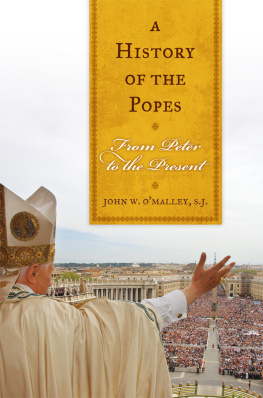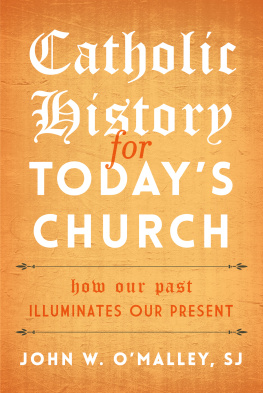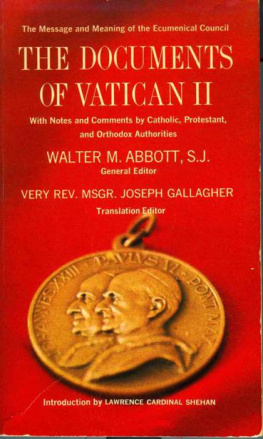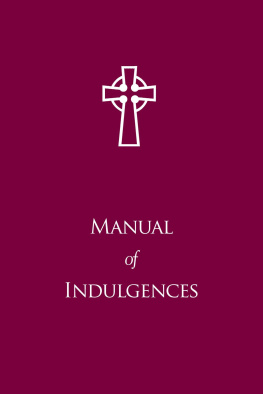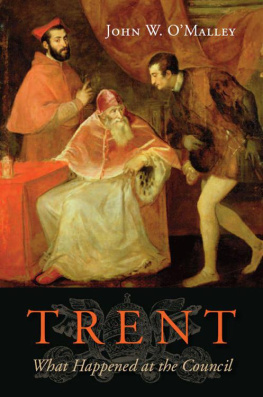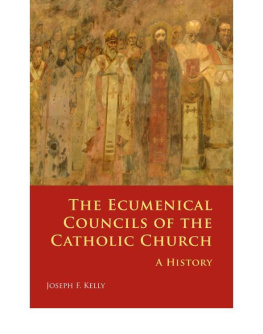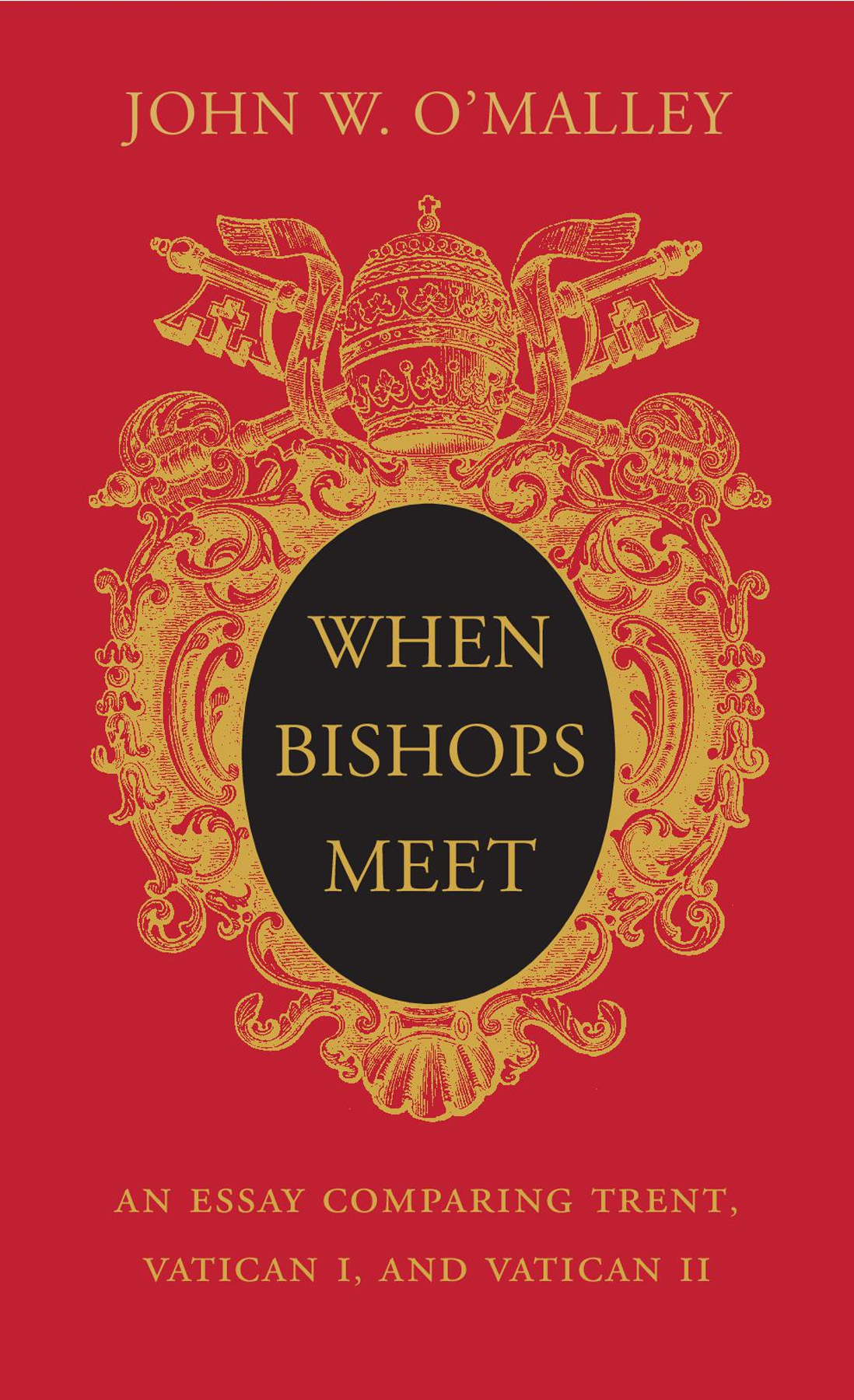JOHN W. OMALLEY
978-0-674-98841-5 (alk. paper)
Names: OMalley, John W., author.
Title: When bishops meet : an essay comparing Trent, Vatican I, and Vatican II / John W. OMalley.
Description: Cambridge, Massachusetts : The Belknap Press of Harvard University Press, 2019. | Includes bibliographical references and index.
Subjects: LCSH: Councils and synods. | Council of Trent (15451563 : Trento, Italy) | Vatican Council (1st : 18691870 : Basilica di San Pietro in Vaticano) | Vatican Council (2nd : 19621965 : Basilica di San Pietro in Vaticano) | Catholic ChurchGovernment.
SINCE 2008, I have published a monograph on each of the last three ecumenical councils of the Catholic churchthe Council of Trent (15451563), Vatican Council I (18691870), and Vatican Council II (19621965). As I was writing them, I began to notice how similar they were in a number of ways, how different in others, and, most important, how the same three fundamental problems recurred in them. I began to see how one councils treatment of an issue threw light on how the others dealt with it. By the time I completed my book on Vatican Council I in 2018, I had decided to try my hand at a small book putting the three councils together, comparing and contrasting them. When Bishops Meet is the result.
The Council of Trent met in that small city because neither Catholics nor Protestants felt they could trust a council meeting in Rome or elsewhere in the Papal States. Due to the volatile political conditions of the time, it met in three distinct periods15451547, 15511552, 15621563. Convoked to respond to Luther and other Protestants, it strove in its early stages to act as a reconciling agent with them. In time, however, it abandoned that hope and moved ahead simply to set the church on a better path, which resulted, among other things, in drawing a strong line of demarcation with the Protestant churches. In this way and others, the council had a lasting impact on modern Catholicism, even though it was often praised or damned for things it never did.
By the mid-nineteenth century, Catholics were ready to accept Rome as the site of the council that Pius IX (r. 18461878) convoked in 1869 to meet there. The pope, like most Catholic leaders, was deeply distressed over the utterly new situation ushered in by the French Revolution and saw it as destructive of Christian values and even of Western civilization itself. He saw an infallible pope as the remedy that could provide stability amid the threatening chaos. Papal infallibility became the dominating issue at the council, and it is for the councils definition of it that Vatican I is remembered.
A century later, Pope John XXIII (r. 19581963) convoked Vatican Council II. The convocation came as a great surprise because the persuasion had grown that Vatican Is definition of infallibility had rendered councils superfluous. Vatican II, like Vatican I, addressed the problem of the modern world, but a modern world much changed since 18691870. The prelates at the council realized that the church had to come to terms with that world and had to abandon, at least in some measure, its anti-world stance. The council is perhaps best understood in that perspective.
I base everything I say here about those three councils on what I said in the original books. On that level, there is nothing new in When Bishops Meet. On another, however, the book is altogether new. Putting issues side by side throws new and sometimes significant light on what might otherwise seem ho-hum information, such as the number of cardinals participating in a given council. The book thus provides new perspectives on each of the councils and, most important, new perspectives on councils as such.
The book is therefore unique. No book like it exists in any language regarding these councils, nor does any book like it exist in any language regarding other councils. When Bishops Meet therefore breaks new ground methodologically. It is a novel way of looking at councils and studying themsynchronically rather than, as usual, diachronically. Scholars have often pointed out individual instances of how one council might be like or different from another, but none has done a systematic and sustained analysis in any way resembling what I undertake here.
As the Table of Contents makes clear, I divide the book into three parts. In the first, I analyze the three most basic issues that explicitly or, more commonly, implicitly, concerned these councils: What is a council supposed to do? Does church teaching change? Who has final authority in the church? This is the part that provides important perspectives on the council phenomenon. In the second part, I analyze the changing roles of different categories of persons who participated in the councils. At Trent, for instance, laypersons were official members of the council and had direct influence on its proceedings, whereas at Vatican II their influence was, at best, indirect. In the third part, I ask the fundamental question: Did these councils make any difference in the Catholic church, in other churches, or in society at large? I also speculate about what the future might hold for councils.
When Bishops Meet is an extended essay on the three councils. To some extent, it is an essay on Catholicism itself. As befits an essay, it is bereft of documentation supporting the points it makes. The sweep of what I attempt here in so few pages makes it virtually impossible to cite sources except in ways that would satisfy no one. It leads me into generalizations that sometimes need serious qualification. But the cause is not lost. Readers who want to know how I arrived at what I say or at how I might qualify it can consult my monographs on the councils, each of which contains ample documentation and a full index.
I stress, however, that When Bishops Meet stands on its own. It is perfectly understandable without any recourse to its parent texts. Persons who have read one or more of those texts might better appreciate what I say, but readers new to councils will have no problem following the argument, learning a lot about one of the most venerable institutions of the Christian church, and, I hope, enjoying the experience.
Councils trace their origins to the event related by Saint Luke in the fifteenth chapter of the Acts of the Apostles, where the evangelist described how the apostles and elders met in Jerusalem to decide what should be required of gentile converts to the new way. With that unassailable precedent as a justification, similar meetings began to take place in the wider Hellenistic world as early as the second century wherever Christians were established in any number. The meetings took on common forms and adopted similar procedures. They were meetings, principally of bishops, who, because they were acting in Christs name, had authority to make decisions binding on the church. The Greek name for them was synods, and the Latin name was councils. In the West both words came into use as synonyms and, until quite recently, were used interchangeably. Both the Council of Trent and Vatican II refer to themselves as synods.


